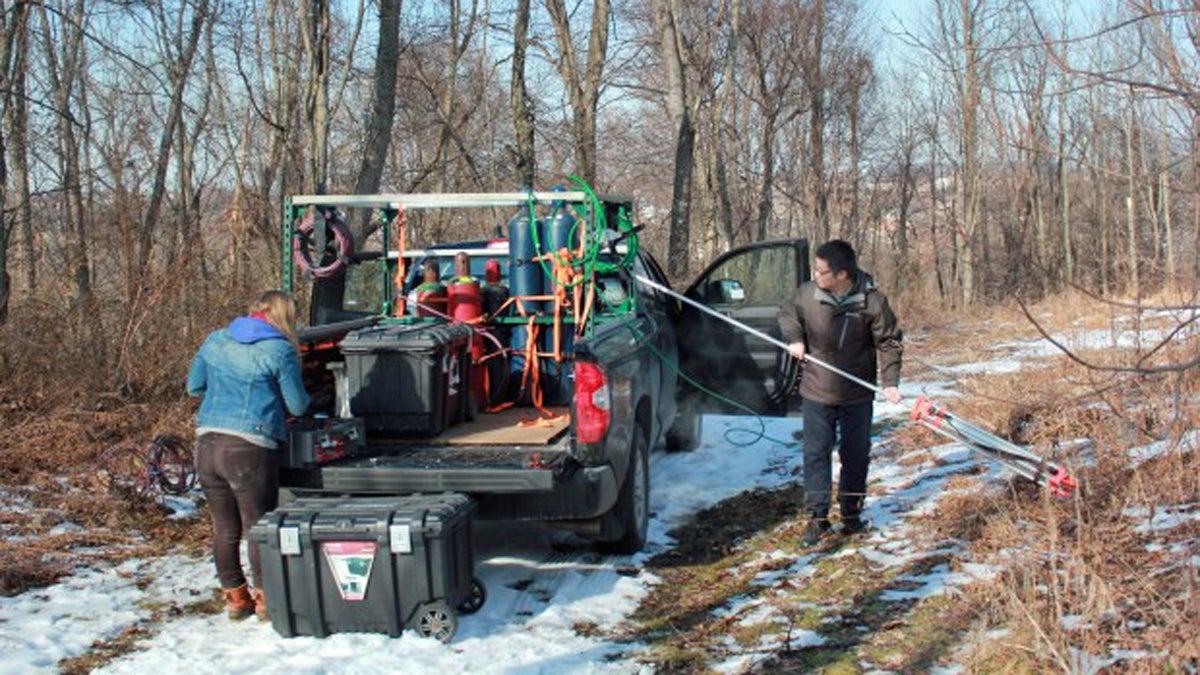Measuring the climate trade-off between coal and natural gas
Listen
Researchers Xiang Lee and Melissa Sullivan prepare to measure methane from a well site in Monroeville Community Park. (Susan Phillips/StateImpact Pennsylvania)
President Obama’s plan to combat climate change relies heavily on replacing coal with natural gas as a way to reduce the amount of carbon dioxide electric power plants pour into the atmosphere. But natural gas comes with it’s own climate problems.
Methane, the main component of natural gas, is also a powerful greenhouse gas, which can be 84 times more potent than carbon dioxide within twenty years. And with so many opportunities for unburnt methane to escape on its way from the wellhead to the power plant, those leaks could offset any benefits from burning natural gas instead of coal. Scientists have just begun to try to measure those leaks. One team of researchers from Carnegie Mellon University in Pittsburgh, spends their days chasing methane plumes.
Click through to continue reading on StateImpact Pennsylvania.
WHYY is your source for fact-based, in-depth journalism and information. As a nonprofit organization, we rely on financial support from readers like you. Please give today.


